English follows Japanese.

OVERVIEW
このアプリはミュラーリヤーの錯視を実験できるアプリです。

外向図形の水平線分と内向図形の水平線分の長さが等しく「見える」位置でタップすることで、錯視量(単位 ピクセル)を記録できます。
合計10回の試行を1セットとして結果を記録でき、次のセットを実行したときに前回の結果が上書きされる仕組みです。試行結果はすべてスマートフォンの端末内部に記録されます。
FOR USERS
このアプリは心理学の実験をおこなうかた、心理学を勉強中のかた向けにつくりました。
WHAT IS MULLER LYER ILLUSION?
錯視図形の中でも有名なミュラー・リヤー図形。外向図形の水平線分の長さと内向図形の水平線分の長さを比較したときに、実際には同一の長さであるにもかかわらず、外向線分のほうが長く見えます。(坂田(1991))。
本アプリでは左側の外向図形の水平線分が長く見えます。
さらに、水平線分から伸びる左右の矢羽根の角度によって錯視量が変化します。浜口(1996)では鋭角過大視・鈍角過小視があり、鋭角は過大視、すなわち矢羽根の角度が小さいほど錯視量が大きくなり、一方で鈍角は過小視、すなわち矢羽根の角度が大きいほど錯視量が小さくなります。
本アプリでは水平線分の長さを200.0 pixelに、また矢羽の角度を60°にそれぞれ固定しています。
参考文献
坂田勝亮(1991)見え方を測る 市川伸一(編著)心理測定法への招待 サイエンス社 pp.12-21
浜口恵治(1996)ミュラー・リヤー錯視に関する角度錯視説の実験的研究 高知大学
HOW TO USE
事前準備
はじめにスマートフォンの回転を許可します。
■iOS
■Android
実行
「ホーム」タブから「試行開始」ボタンをタップします。
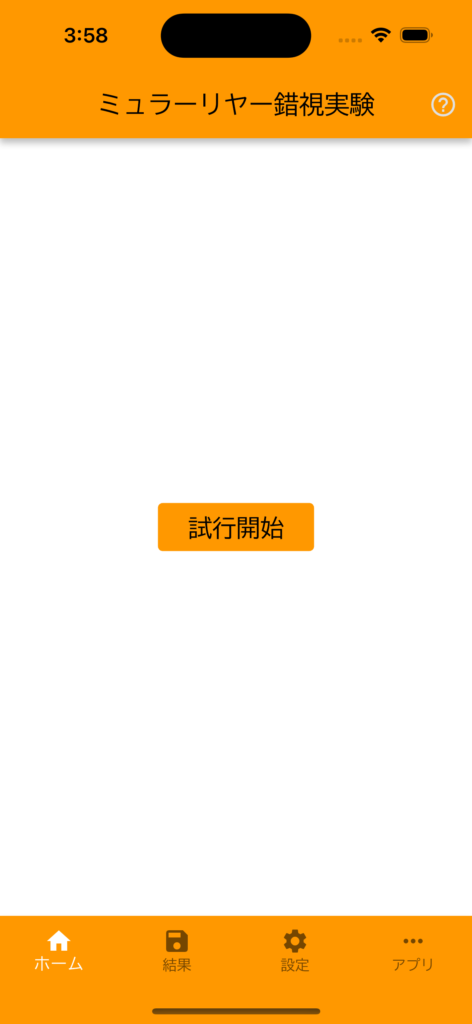
「画面を横向きにしてください」のメッセージが表示されたら画面を横向きにします。
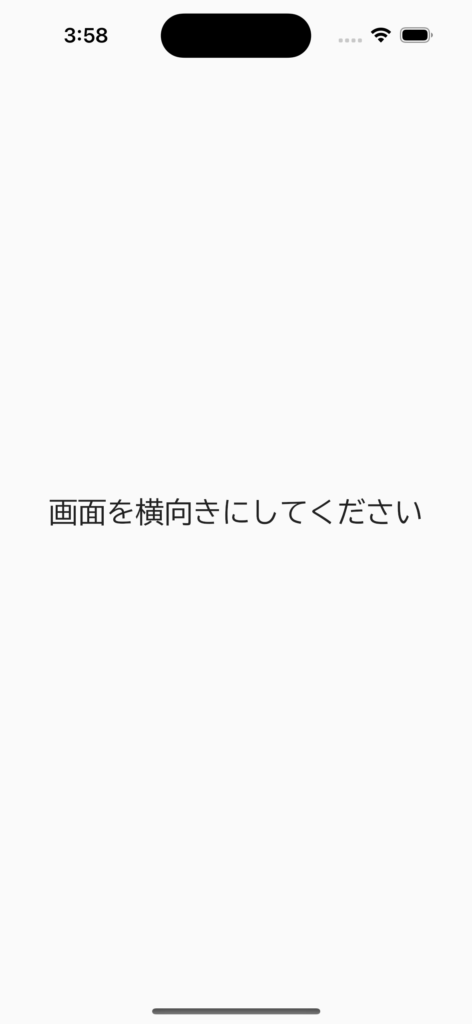
ミュラーリヤーの図形、左に外向図形、右に内向図形がそれぞれ表示されます。右側の内向図形の水平線分を左右にドラッグして、左の外向図形の水平線分と長さが一致するように見えたら手を画面から離します。

第一試行を終えるために画面を一度タップします。次の試行に進むかを聞かれますので「はい」をタップします。

以降、第10試行まで繰り返すと、実験結果が表示されます。
実験結果として、錯視量(単位:ピクセル)が10回分表示されます。各試行は上昇系列と下降系列のいずれであったかについても表示されています。
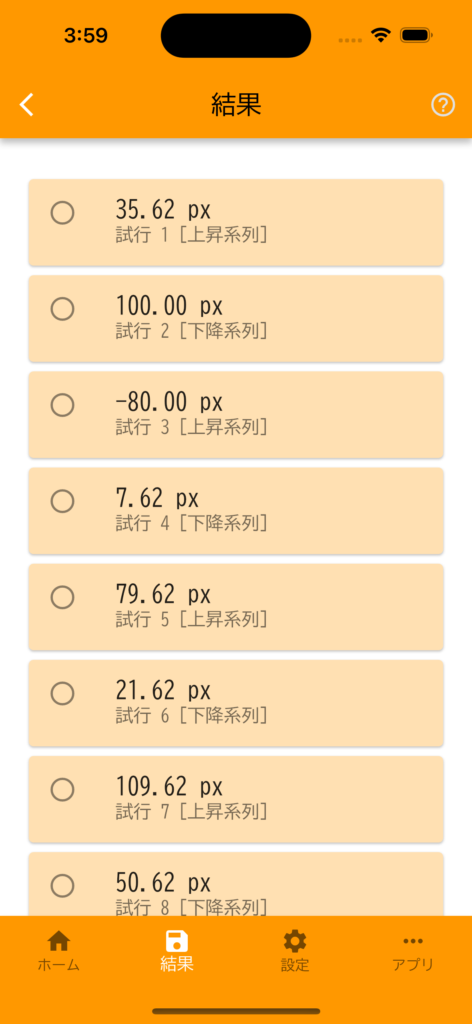
以上で実験は終了です。
SPECIFICATION
錯視量の計算
下図の例をもとに説明します。
左側の外向図形の水平線分の長さ200pixelは固定で、右側の内向図形の水平線分が280 pixelとなった場合、錯視量は280pxから200pxを引いた80pixelとなります。もしも、右側の内向図形の水平線分が左側の外向図形の水平線分よりも短かった場合、錯視量はマイナスで記録されます。
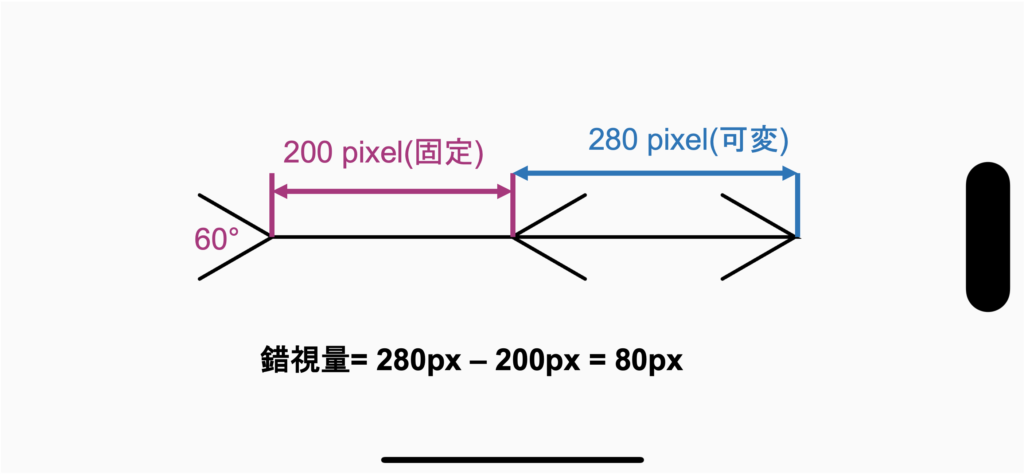
矢羽の角度
上図のとおり、矢羽の角度は60°で固定しています。
各試行の開始位置
各試行の開始位置は設定画面で確認できます。
■上昇系列および下降系列
上昇系列および下降系列の判断は、左側の外向図形の水平線分の長さ(下図「直線の長さ」)よりも開始位置のピクセル数が小さければ上昇系列、大きければ下降系列として結果に表示されます。
例. 試行1の開始位置100pxは、直線の長さ200 pixelよりも小さい(短い)ため上昇系列となります。
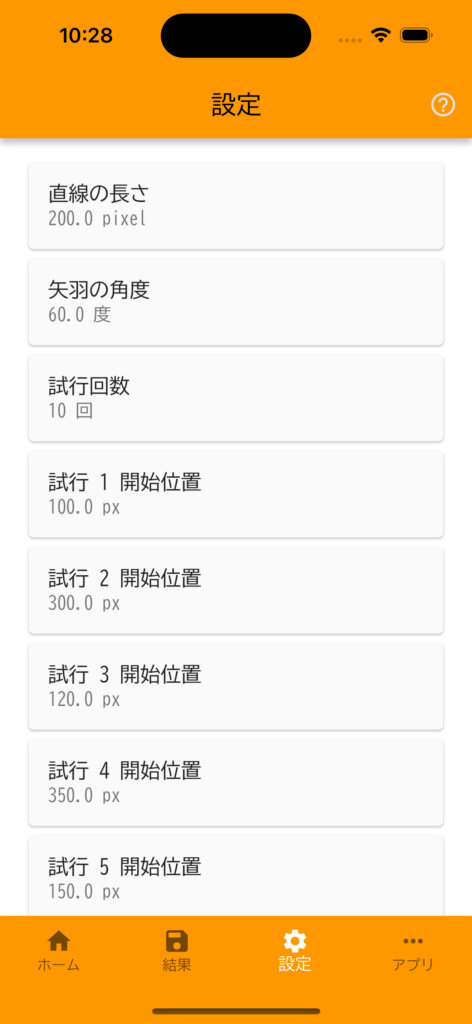
試行回数
試行回数は1セットあたり10回です。
対応OS
iOS, iPadOS,
DOWNLOAD
アプリはストアから無料でダウンロードできます。

CONTACT
最後までお読みいただきありがとうございます。
学校でのご活用、ご要望など本アプリに関するお問い合わせは下記よりお願いいたします。
English
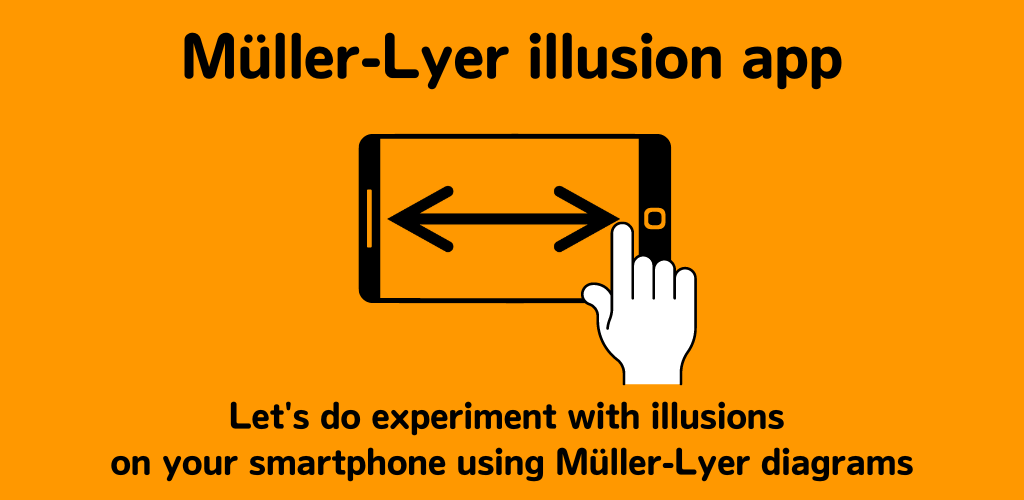
OVERVIEW
This app allows you to experiment with the Müller-Lyer optical illusion.

You can record the amount of illusion (unit pixel) by tapping at the position where the horizontal line with the extroverted figure and the horizontal line with the introverted one are "visibly" equal length.
A total of 10 trials can be recorded as one set, and the previous result will be overwritten when the next set is performed. All trial results are recorded inside the smartphone device.
FOR USERS
This app was created for those who are conducting experiments in psychology and those who are studying psychology.
WHAT IS MULLER LYER ILLUSION?
The Muller-Lyer figure is one of the most famous optical illusion figures. When you compare the length of the horizontal line with the extroverted figure and the length of the its with the introverted figure , the extroverted figure line appears longer, even though they are actually the same length. (Sakata (1991)).
In this app, the horizontal line with the extroverted figure (left one) looks longer.
Furthermore, the amount of illusion changes depending on the angle of the left and right arrow extending from the horizontal line. Hamaguchi (1996) said there are acute-angle over-vision and obtuse-angle under-vision. Acute-angle is more over-vision. The smaller the arrow blade angle makes the greater the amount of illusion and vice versa.
In this application, the length of the horizontal line is fixed at 200.0 pixels, and the angle of arrow is fixed at 60 degrees.
References
Katsuaki Sakata (1991) Measuring the way you see Shinichi Ichikawa (ed.) Invitation to psychometric methods Science Publishing pp.12-21
Hamaguchi, Keiji (1996) Experimental study of the angular illusion theory of the Muller-Lyer illusion Kochi University
HOW TO USE
Advance preparation
First allow the rotation of the smartphone.
■ iOS
Rotate the screen on your iPhone or iPod touch
■Android
How to automatically rotate the screen
Execution
From the Home tab, tap the Start button.
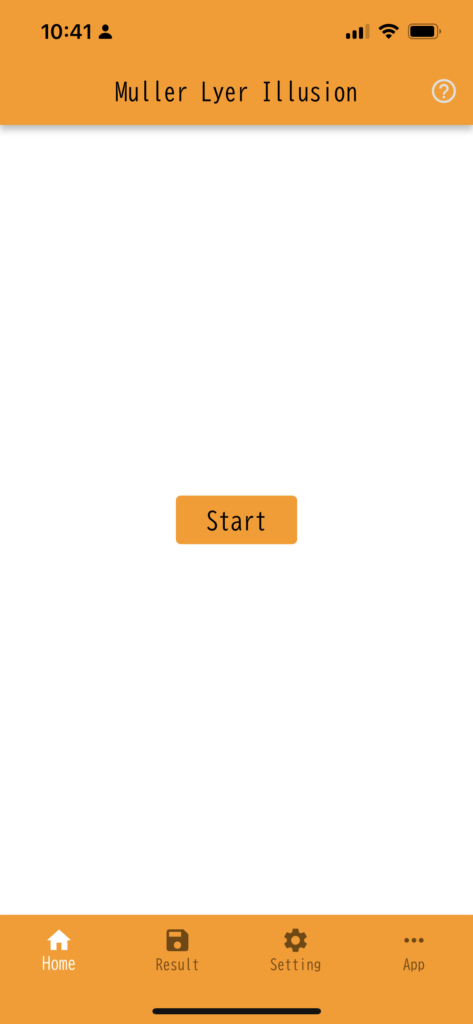
When the message "Turn your smartphone landscape mode" is displayed, turn the screen sideways.
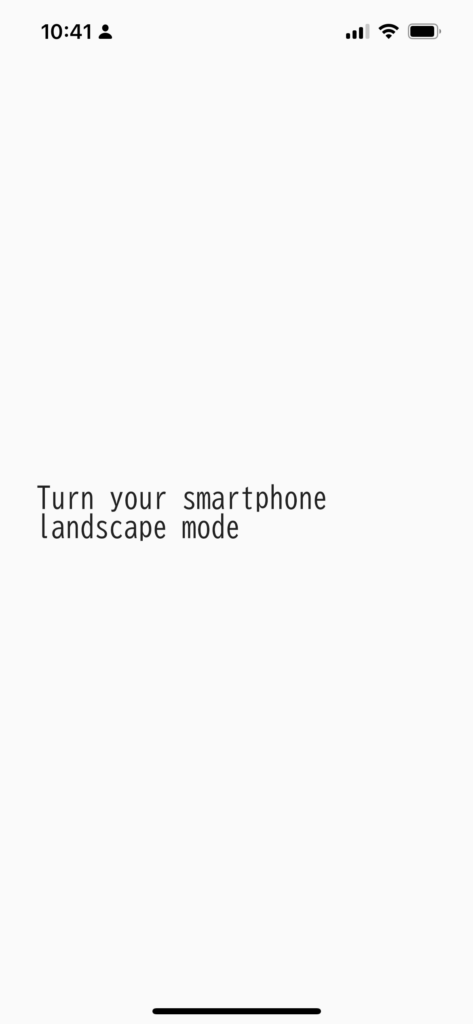
You can see muller-Lyer shape, extrovert shape on the left and introvert shape on the right. Drag the horizontal line with the right introverted shape left or right until it appears to match the length of the horizontal line of the left extrovert shape, then lift your hand.

Tap the screen once to end the first trial. You will be asked if you want to proceed to the next trial, so tap "OK".
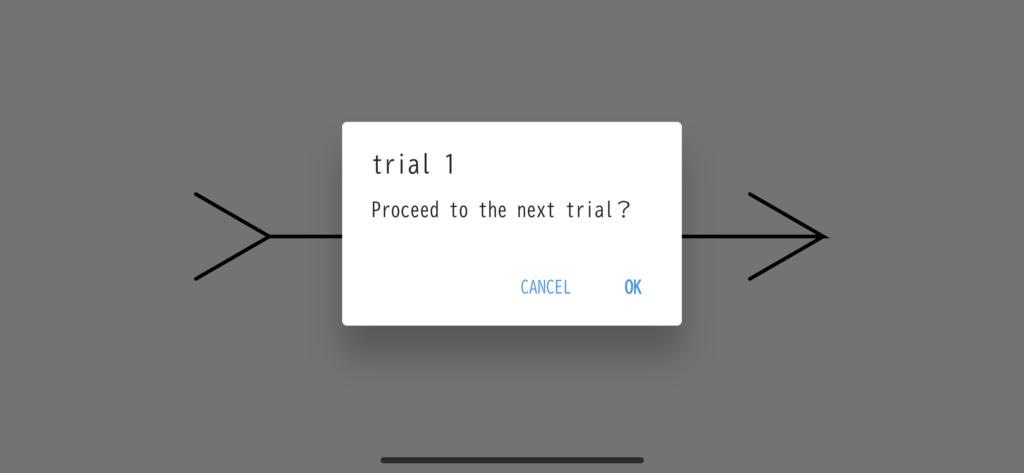
After that, repeat up to the 10th trial, and the experiment result will be displayed.
As a result of the experiment, the amount of illusion (unit: pixel) is displayed for 10 times. Whether each trial was on the ascending or descending series is also indicated.
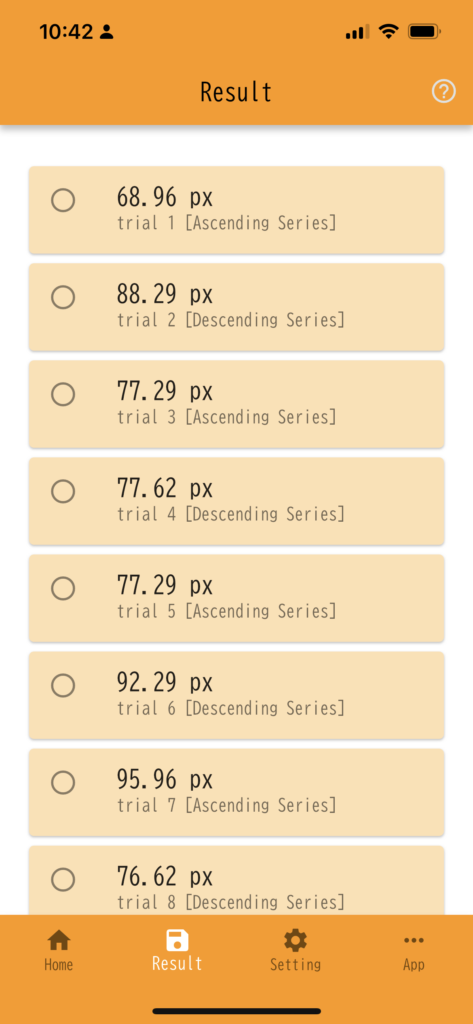
This is the end of the experiment.
Specifications
Calculation of amount of illusion
The following explanation is based on the example shown in the figure below.
If the horizontal line length with the extroverted figure on the left is fixed at 200 pixels, and the horizontal line with the introverted figure on the right is 280 pixels, the amount of illusion will be 80 pixels, which is 280px minus 200px. If the horizontal line with the right introverted figure is shorter than the horizontal line with the left extroverted figure, the amount of illusion is recorded as a negative value.
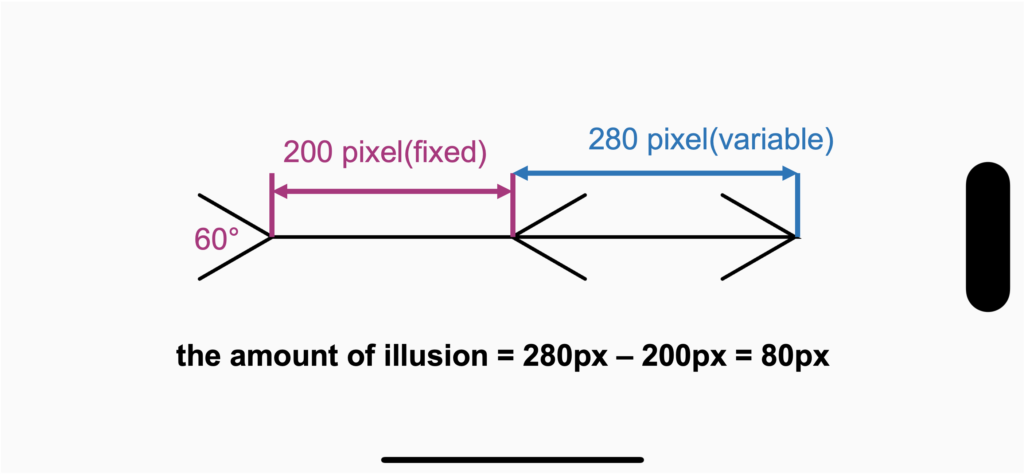
Arrow angle
As shown in the above figure, the arrow angle is fixed at 60°.
Starting position of each trial
You can check the starting position of each trial on the setting screen.
■ Ascending series and descending series
Ascending series and descending series are judged by starting position. If the number of pixels at the starting position is smaller than the length of the horizontal line with the extroverted figure on the left side ("Length of straight line" in the figure below), and as descending series if larger.
Example. The starting position of 100px in Trial 1 is smaller (shorter) than the straight line length of 200 pixels, so it is an ascending series.
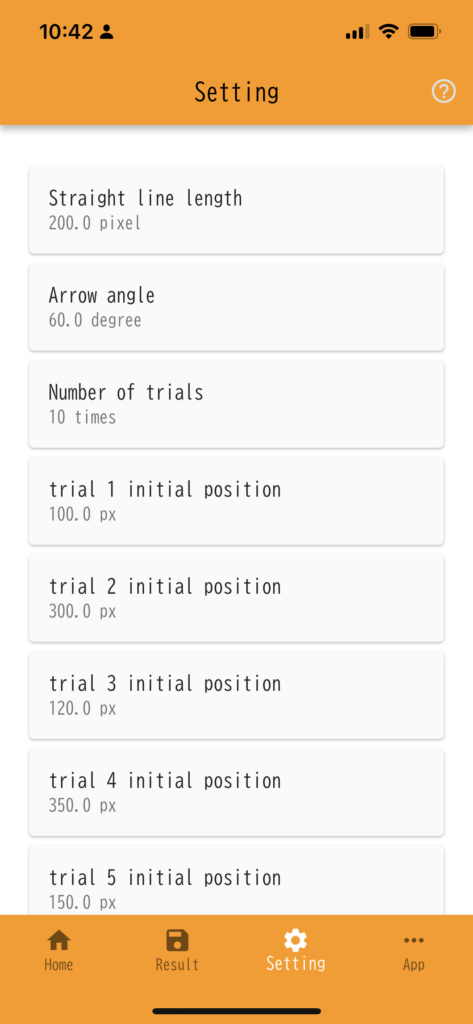
Number of trials
The number of trials is 10 per set.
Compatible OS
iOS, iPadOS,
DOWNLOAD
The app can be downloaded for free from the store.

CONTACT
Thank you for reading to the end.
For inquiries about this app, such as use at school and requests, please contact us from the following button.